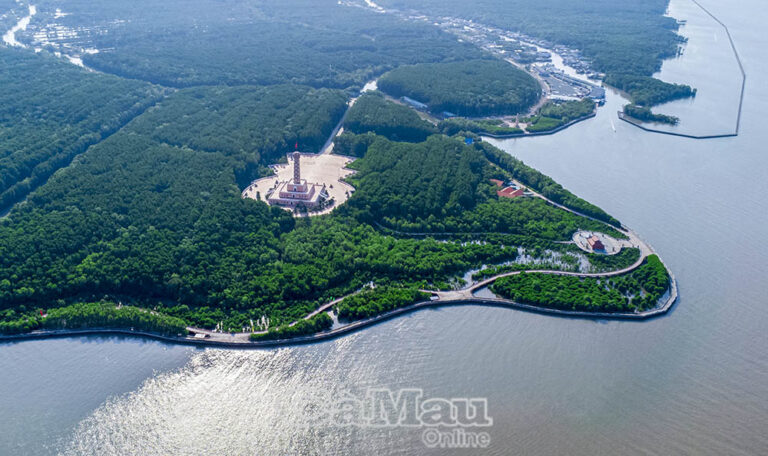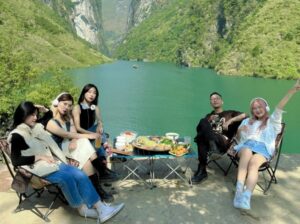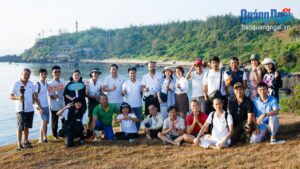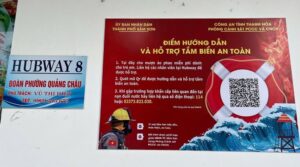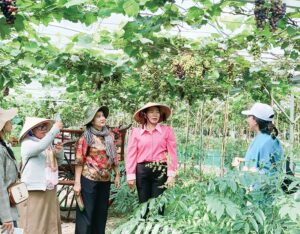As a province located at the end of the Southwest region, An Giang is endowed by nature with distinct features compared to the delta region, with mountains, forests and plain terrain interwoven to create a colourful and rich picture, attracting domestic and foreign tourists to visit and entertain.
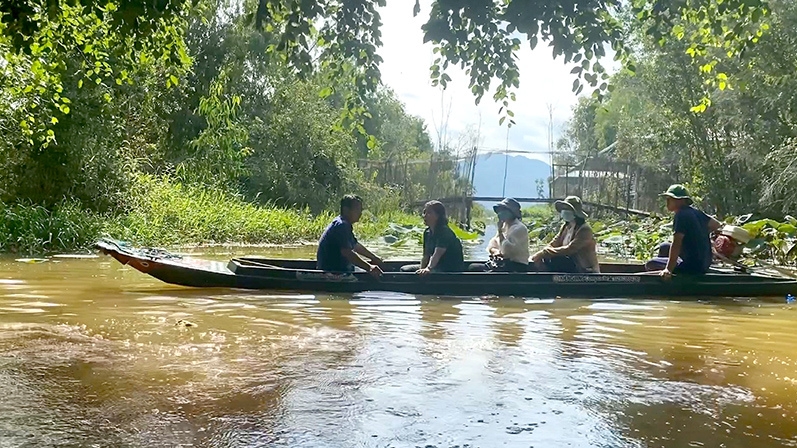
An Giang has the strength of eco-tourism (Photo: Thanh Dung )
The Bay Nui area consists of two districts of Tri Ton and Tinh Bien. Bay Nui has forests and many famous mountains that attract tourists such as Cam, Co To, Anh Vu mountains. Bay Nui also has a system of pristine flooded ecological forests such as Tra Su and Tan Tuyen melaleuca forests.
Recently, An Giang Provincial People's Committee issued a decision approving the project "Eco-tourism, resort and entertainment in Tra Su Melaleuca forest landscape protection area, period 2021-2030" in order to make Tra Su Melaleuca forest a tourist destination reaching national and international levels.
Tra Su Melaleuca forest in Van Giao commune, Tinh Bien district, although recently put into operation for tourism, has become an indispensable destination when tourists come to An Giang. Every year, before the COVID-19 epidemic, the place welcomed thousands of tourists, and the number of visitors increased year by year. Tra Su attracts tourists by preserving the pristine wetland ecosystem with thousands of creatures, including populations of birds, fish, amphibians, reptiles and rare insects. In 2016, the Provincial People's Committee approved the conservation and sustainable development planning of Tra Su Melaleuca forest landscape protection area until 2020 and orientation to 2025, within an area of 1,050 hectares.
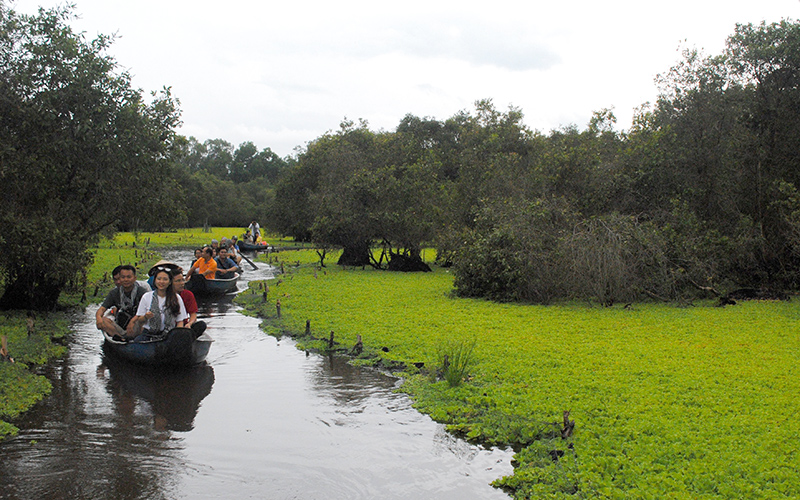
A corner of Tra Su Melaleuca forest attracts many visitors, before the COVID-19 epidemic. (Photo:Thanh Dung)
Types and products of eco-tourism in Tra Su Melaleuca forest include visiting the habitats of the forests and wetlands by canoe rowing.
On the way to visit, visitors can see and listen to introductions about wetlands and biodiversity resources of the wetland ecosystem. Guests can visit the environmental interpretation room, in which they will be introduced to specimens of biological resources on display from Tra Su special-use forest, and the only hilly ecosystem of the Mekong Delta, and listen to an introduction about special-use and protection forests by the Management Board of Protective and Special-use Forests of An Giang province (the Bay Nui, Sam mountain, Sap mountain areas).
Students who come here, also listen to extracurricular teaching about wetland ecology, melaleuca forest ecosystems, flora and fauna resources, forest protection and nature conservation activities in Tra Su special-use forest.
In the environmental interpretation house, a booth is arranged to display and sell souvenirs, products produced and processed with local materials and typical specialties of Tra Su special-use forest and of the province. Visitors experience self-cooking traditional dishes using An Giang's specialty ingredients and learn about food origins, culinary arts and nutritional values.
Tens of kilometres away from Tra Su Melaleuca forest, Tan Tuyen Melaleuca forest in Tri Ton district is also gradually attracting tourists back to nature. Tan Tuyen has a distinctive feature of Melaleuca forests and seasonally flooded grasslands typical of the Long Xuyen quadrilateral region.
The People's Committee of An Giang province have issued a decision approving the project of eco-tourism, resort and entertainment within the Tan Tuyen Melaleuca forest landscape protection area over the 2021-2030 period. According to the Provincial People's Committee, the protection and development of forests will help preserve natural ecosystems and biodiversity for tourism services, contributing to the sustainable development of the Mekong Delta region to adapt to climate change.
Tan Tuyen Melaleuca forest landscape protection area covers an area of more than 256 hectares and is a special-use forest of a wetland ecosystem with typical wetland habitats of An Giang province and the Long Xuyen quadrilateral region.
Through research and survey, the forest has 154 species of plants, belonging to 122 genera and 52 families of two branches of higher plants; there are 63 species of waterfowl; There are 82 species of fish belonging to 26 families and nine orders. In particular, this area has the appearance of fish species listed in the Red Book.
According to An Giang Provincial People's Committee, the principle of developing eco-tourism, resort and entertainment within the landscape protected area of Tan Tuyen Melaleuca forest is not trade of Melaleuca forest ecosystems, wetlands and natural resources for economic value.
This is also the basis for choosing real investors with responsible tourism products to nature.
Types of tourism invested and developed in special-use forests according to Decree 156/2018/ND-CP of the Government, including eco-tourism, resort tourism and entertainment tourism, but tourism products must be diverse and contain the cultural identity of the locality of An Giang in particular and the Long Xuyen quadrilateral region in general.
Thanh DungTranslated by NDO


